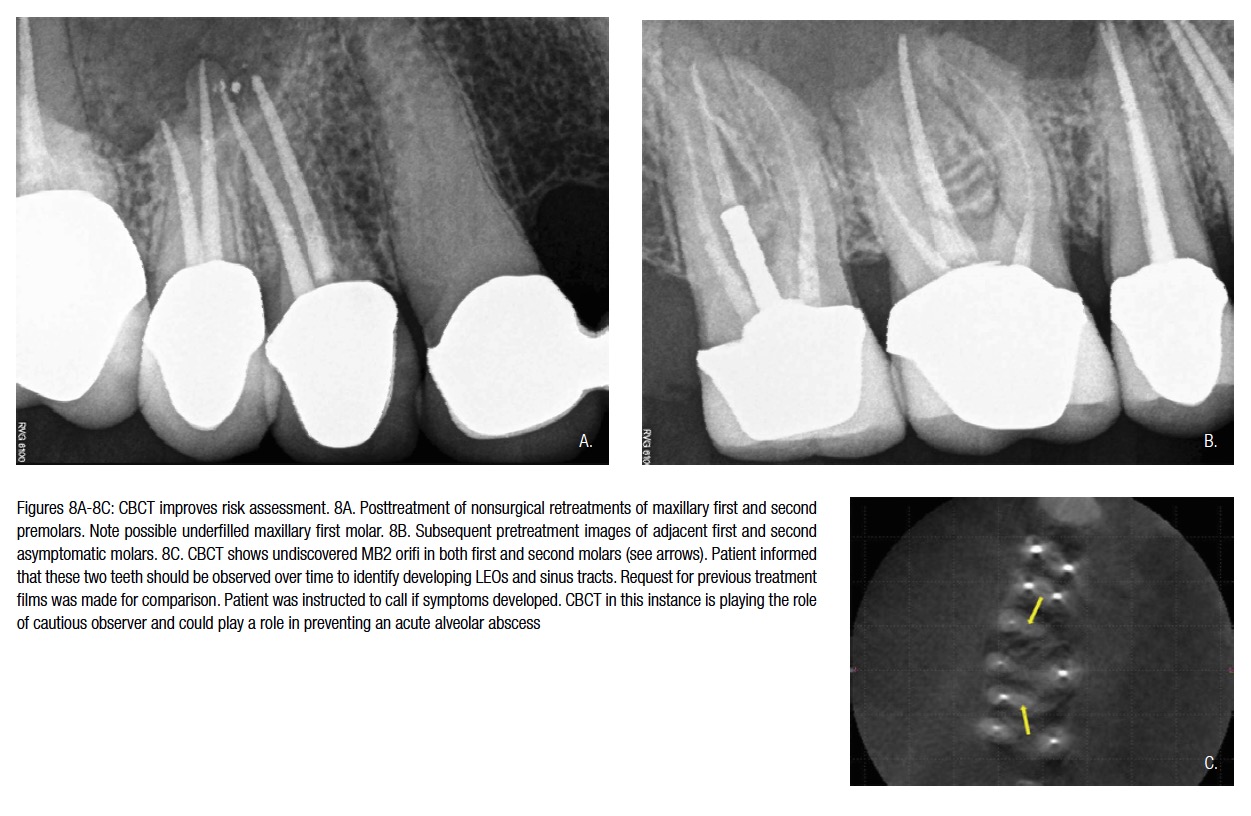Dr. John West discusses the effect of 3D scans on endodontic decision-making
Introduction
 In the field of endodontics, dentists have always “worked in the dark.”
In the field of endodontics, dentists have always “worked in the dark.”
Most of our treatments are performed without using the sense we can most control — our ability to see the situation. In fact, when you think about it, we can simultaneously “see” and “do” in almost all areas of dentistry: anesthesia, crown prep, evaluation of prep margins, impression taking, placing restorative dentistry, occlusal analysis, etc. However, as endodontists, we often rely instead on the sense of “feel.” The combination of feel, previous experience, two-dimensional radiographs, microscopes, and apex locators has raised our endodontic success rates to approximately 90%. Closing the gap between 90% or 95% and 100% has not happened, however, since the recognition of endodontics as a specialty by the ADA in 1963! And so the real question in endo-dontics is not “what you can get away with,” but “what can technology get us to?”

 The answer to closing the endodontic gap toward 100% capacity for healing lesions of endodontic origin (LEOs) where they exist and preventing LEOs where they do not exist is by improving our ability to see. Scotomas, or blind spots, render us unable to see things that are right in front of us. (Think about looking for your car keys, only to find them on the table you were staring at). In the case of endodontics, the scotoma is actual tooth structure, which our eyes are not capable of seeing through. With cone beam computed tomography (CBCT), we can, for the first time, begin to see through teeth. A whole new world opens up, and we are able to make diagnoses, treatment plan, and treat better than ever before.1
The answer to closing the endodontic gap toward 100% capacity for healing lesions of endodontic origin (LEOs) where they exist and preventing LEOs where they do not exist is by improving our ability to see. Scotomas, or blind spots, render us unable to see things that are right in front of us. (Think about looking for your car keys, only to find them on the table you were staring at). In the case of endodontics, the scotoma is actual tooth structure, which our eyes are not capable of seeing through. With cone beam computed tomography (CBCT), we can, for the first time, begin to see through teeth. A whole new world opens up, and we are able to make diagnoses, treatment plan, and treat better than ever before.1
The following eight patient diagnoses and treatment planning decisions are not unique. These examples are rich in the everyday practice of endo-dontists benefiting from CBCT 3D imaging
(Image 1). In the simplest terms, 3D makes us better. Period.
Eight patient examples of CBCT influencing diagnostic and treat-ment decision-making
Take-home message
In order to remain competitive over the next decade and in order to be at the top of our endodontic game, all new and meaningful technologies must be mastered. The question for each of us is not if, but when will we commit and when will we become CBCT adopters. The early adopters are here. The technologies are proven. Don’t be the last one on the block because as with all of today’s technologies, you will never be able to catch up. The growth curve is exponential, and each day, you can lag further and further behind.
CBCT imaging improves diagnosis, improves risk assessment, improves treatment outcomes, improves treatment efficiency, and reduces treatment complications. CBCT literally brings the endodontist closer to reality; enhances reputation, patient engagement, education, and treatment understanding and acceptance; gives the dentist confidence; and can be invaluable in surgical endodontics and safe implant placement. Patients resonate with a live 3D tour of their teeth. If a picture is worth a 1,000 words, a 3D scan is priceless.
In conclusion, I am reminded of the old question: “When is the best time to plant a tree?” Answer: 25 years ago. “When is the second best time to plant a tree?” Answer: Today!
- McClammy TV. Endodontic applications of cone beam computed tomography. Dent Clin North Am. 2014;58(3):545-559.
Stay Relevant With Endodontic Practice US
Join our email list for CE courses and webinars, articles and more..








